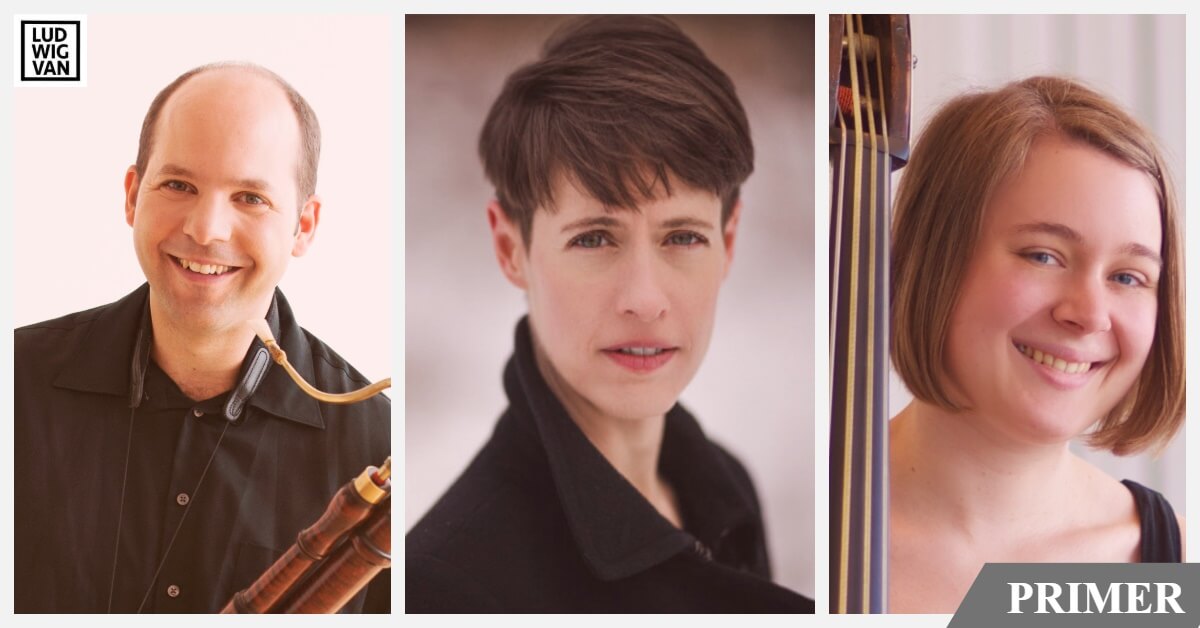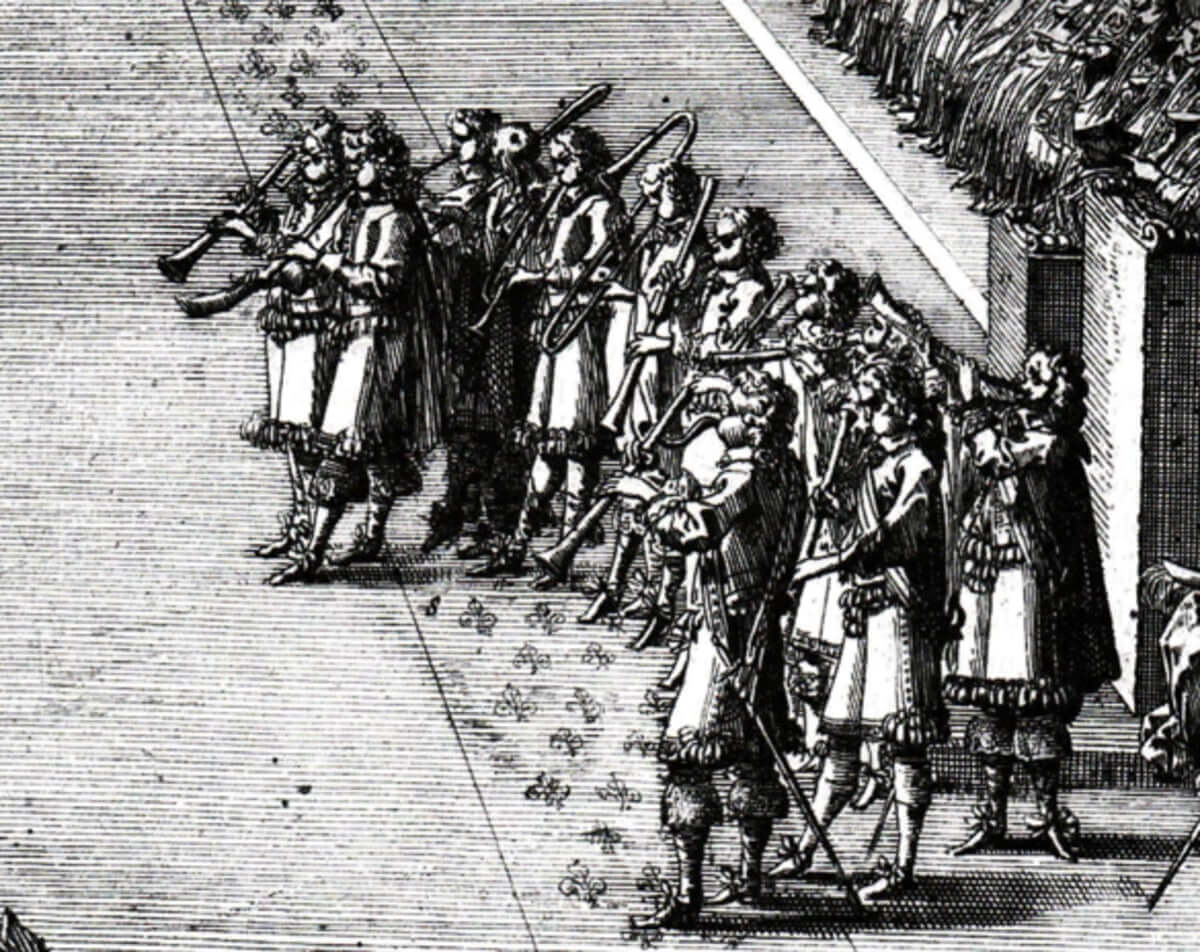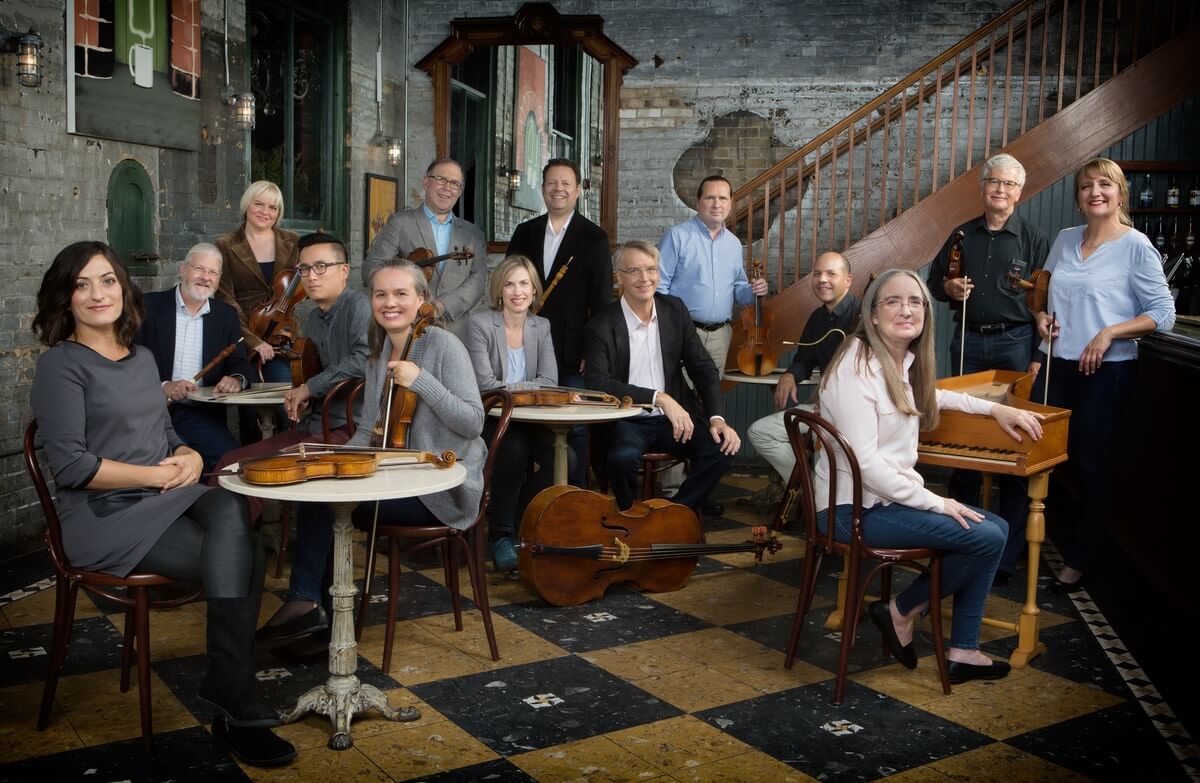Members of Tafelmusik talk about bringing back the wind band, or Harmonie, in music by Mozart, Beethoven and Rossini, and a world premiere by Toronto composer Cecilia Livingston.

It’s hard to imagine a world where things were experienced without modern technology. Word of mouth, and printed posters were the way that things got around. The very first radio broadcast ever wasn’t until 1906, and people had to be present in real time to consume culture. Before broadcasting (and its evolution to digital streaming), if you were dying to hear that new music, you would have to get to a live performance, or you were simply likely to be out of luck, unless…
Unless there was a transcription and arrangements by your local musicians.
New Year, New Harmonie
And that’s what the ever-curious members of Tafelmusik are up to in Gone with the Winds, bringing back some oldies, along with a shiny new commission. “We are excited to welcome you this New Year with a concert featuring the wind instruments of the late 18th century in the special sonority of the wind octet, or Harmonie ensemble,” says Tafelmusik Oboist John Abbeger.
What is Harmonie exactly? Tafelmusik’s Bassoonist Dominic Teresi explains:
“Harmonie, at the time, was a particularly popular chamber ensemble in the 18th-century, especially at court, responsible for providing dinner music (aka “Tafelmusik”) and other courtly entertainments.” As public concert culture grew in the 19th-century, these private Harmonie performances evolved into a newer, public-facing format. It still exists today — but in slightly different roles.
“In France a wind band is still called a Harmonie and Spain has always had a very strong band tradition. Wind bands in America continue in our schools and the military, and of course other forms of bands are quite popular,” Teresi adds.

Herr Mozart
Taking the Harmonie format, Tafelmusik wanted to center the focus on Mozart.
“Mozart was drawn to the powerful sound of this wind ensemble, and he left us a small handful of masterpieces written for this combination of instruments. In addition, the enormous popularity of his music, and specifically his operas, inspired many wonderful arrangements for Harmonie by Viennese wind players,” says Abbeger.
In Mozart’s Vienna, these wind ensembles filled the city day and night, playing requests and arrangements; by then, the full Harmonie was an octet, consisting of oboes, clarinets, horns, bassoons, and often a double bass (a curiosity!) — and the star clarinetist, Anton Stadler, who played in Emperor Joseph’s Harmonie — was the muse for Mozart’s Clarinet Quintet and Clarinet Concerto.
Plus One
What’s a double bass doing with bunch of wind instruments?
Pippa Macmillan, a new bass player for Tafelmusik, relishes in being the odd one of the group. “It’s quite a freeing feeling to be the only string player […] Instead of matching bow strokes with my colleagues, I’ll be following their breathing.”
Macmillan explains that in the role of the double bass is to add an extra layer to the Harmonie. Doubling the second bassoon part, but one octave lower, Macmillan actually has no specific part to play from. It “gives me the freedom to create my own part that I feel adds the most to the ensemble’s sound.”
Seeing that Mozart did write a designated bass part for Serenade no. 10, Gran Partita (K361), but not for Serenade no. 12 (K 361/370A), Macmillan and Tafelmusik decided that it would be suitable to add one here too.

Old meets New
Centered on Mozart, Gone with the Winds features that other operatic genius, Rossini (in Sedlak’s arrangement), and Beethoven’s Sextet; and to contrast the old, Tafelmusik commissioned a new work by Toronto-based composer Cecilia Livingston.
Expanding on the current theme Old meets New for Tafelmusik’s 19-20 season, Livingston seemed a good fit. “Elisa approached me, and asked if I’d be interested in writing something for this particular program – which includes arrangements of opera excerpts, for winds,” Livingston recalled.
Livingston’s recent projects include a residency at Glyndebourne Opera, and the commission call from Tafelmusik was a welcomed change of pace. “… to write a piece that didn’t set text, where musical ideas alone could drive what unfolds… I ended up singing all the parts in this piece too, just the way I do when I write for the voice.”
Cheekily titled Gone with the Winds, writing for Tafelmusik and its historical performers was both familiar and unfamiliar for Livingston. The classical instruments, especially for winds and brass, have gone through significant development in construction and performance practice in the last few centuries, and the fusing of current ideas into historical instrumental performance is an experience to be cherished.
And further expanding the idea of Old meets New, the audience just might see the glimpse of the old from this new work, as she fuses bits from Mozart and Beethoven, with whiff of the famous “Tara’s Theme”, from Max Steiner’s score for Gone with the Wind.
Tafelmusik presents: Gone with the Winds. 16-19 January 2020, at Jeanne Lamon Hall, Trinity- St. Paul’s Centre. Details Here.
#LUDWIGVAN
Want more updates on classical music and opera news and reviews? Follow us on Facebook, Instagram or Twitter for all the latest.
- CRITIC’S PICKS | Classical Music Events You Absolutely Need To See This Week: April 22 – April 28 - April 22, 2024
- CRITIC’S PICKS | Classical Music Events You Absolutely Need To See This Week: April 15 – April 21 - April 15, 2024
- SCRUTINY | Laurie Anderson Entrances A Sold-Out Koerner Hall With A Journey Down The Rabbit Hole - April 8, 2024



